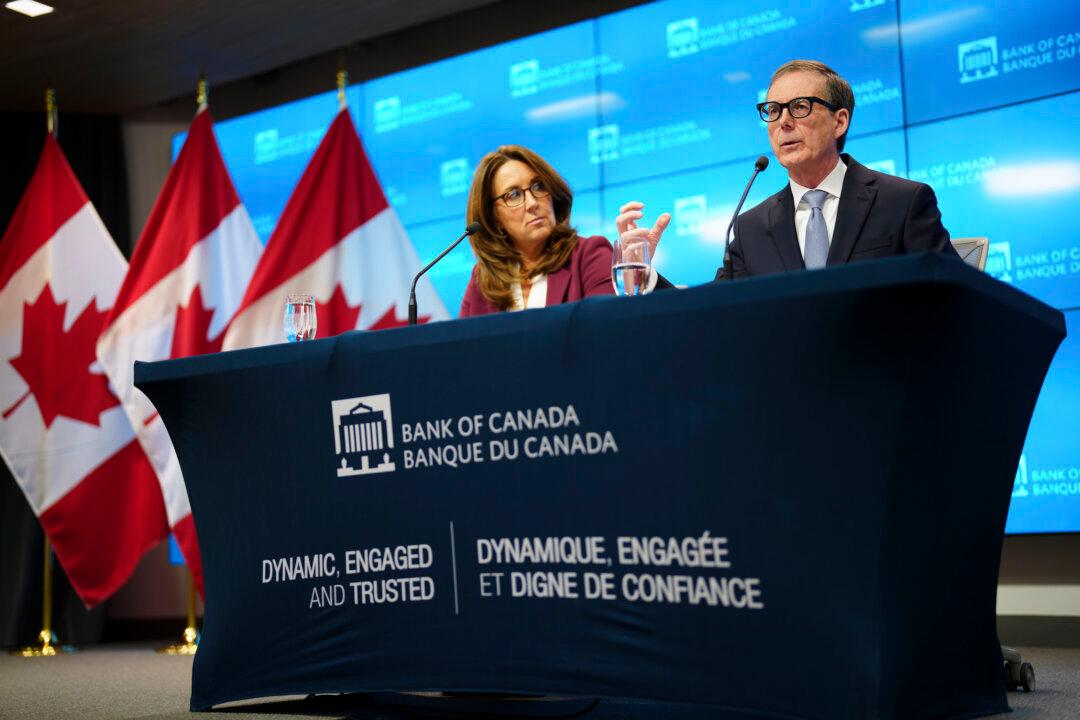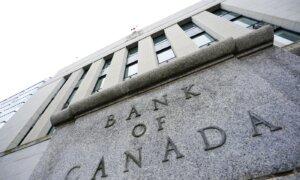OTTAWA—The Bank of Canada announced a shift in its thinking on Jan. 24 while holding its policy rate at 5 percent. The central bank softened its stance on more rate hikes and gave hints that it’s now beginning to think of when it would be appropriate to start cutting interest rates.
But while many are forecasting multiple rate cuts in 2024 and avoidance of a recession, Richard Dias, global macro strategist at PGM Global in Montreal, told The Epoch Times he would not be planning for rate cuts any time soon due to pent-up inflation in housing and food—and elevated immigration.
Mr. Dias notes that skyrocketing population growth necessitates higher interest rates.
“They finally crystallized what a lot of us have been saying, which is [that] the unfettered immigration to Canada has been very inflationary,” he said.
In its monetary policy report released Jan. 24 along with its policy rate announcement, the BoC said that while higher interest rates cooled inflation across a wide range of goods and services, inflation of shelter costs is an “important exception” as those prices are rising at around 7 percent annually.
According to the central bank, mortgage interest costs and rental price inflation have risen sharply and are currently around 29 percent and 8 percent respectively. The BoC notes that these two components are the main drivers of inflation in shelter services.
Thus, inflation remains persistent and Bank of Canada governor Tiff Macklem pushed back against being more precise on when rate cuts might be coming.
“We’re concerned about the underlying persistence of underlying inflation. And what that means is that it’s premature to discuss reducing our policy rate,” he said during the central bank’s press conference.
“Our deliberations are shifting from whether we’ve done enough to how long we hold, but there was a clear consensus it’s premature to be discussing cutting our policy rate,” Mr. Macklem said.
‘Complete Disaster’
Mr. Dias says that the BoC would never forecast a recession but that Canada is already currently mired in one due to an exploding population while gross domestic product (GDP) growth remains weak.“That’s a complete disaster,” he said.
“We know the only reason that they would cut rates significantly is to mitigate a recession, right? … If that was like a normalized rate of population growth, we would absolutely have been in recession.”
The BoC’s latest quarterly forecasts are roughly unchanged from those in October, with the economy projected to grow just 0.8 percent in 2024 and rebound by 2.4 percent in 2025.
“We’re not forecasting a deep recession. We don’t think we need a deep recession to get inflation back to target. But we do need this period of weak growth and what that has done is it has allowed supply to catch up,” Mr. Macklem said.
The central bank projects inflation to fall back to its 2 percent target by late 2025.
Hard Landing Scenario
A counterpoint comes from Oxford Economics (OE), which says in a Jan. 22 note that Canada has already slipped into a moderate recession, which will help bring inflation back down to the 2 percent target by late 2024—a full year before the BoC projects this outcome.This hard landing, representing an economic contraction of 0.6 percent for 2024 based on OE’s forecast, is a much dimmer prediction compared to the BoC’s forecast of 0.8 percent growth, OE says in a Jan. 24 note.
“We expect a cutback in consumption and further weakness in housing will be key drivers behind Canada’s economic downturn. Surging debt service costs from mounting mortgage renewals will push households to deleverage, while real disposable incomes will come under pressure from still-elevated prices, slower wage growth, and job losses,” said Tony Stillo, OE’s director of Canada economics, in the Jan. 22 note.
Mr. Stillo also points out that if the Canadian economy achieves the soft landing the BoC predicts, inflation will remain firmer and the BoC will hike rates further to 5.5 percent by mid-2024.
Mr. Macklem did say at the press conference that the central bank could still raise rates if inflation ticks higher, but “if the economy evolves broadly in line with the projection we published today, I expect future discussions will be about how long we maintain the policy rate at 5 percent.”
But if a significant pick-up in growth is coming in 2025, as the BoC forecasts, CIBC chief economist Avery Shenfeld said in a Jan. 24 note that multiple rate cuts are coming in 2024.
“But the [central] bank seems to be counting on rate cuts, which we see as beginning in June, in its projections for a pickup in growth in latter half of the year, and for much better growth in 2025, tying that improvement to ‘the recent easing in financial conditions,’” Mr. Shenfeld said.
The Bank of Canada didn’t say 2025 growth depends on rate cuts and instead pointed to other factors that would drive the economy upwards, such as consumer spending, home construction, and foreign demand supporting exports and business investment.
CIBC is calling for the first rate cut to come in June and for the BoC to cut rates by a total of 1.5 percentage points (150 basis points) by the end of 2024, which is more than what financial markets are expecting.
“[That’s] a lot of cuts priced in, I would say, and I think that’s very aggressive,” Mr. Dias said about prevailing rate cut expectations.
The Bank of Canada Jan. 24 decision to hold its policy rate at 5 percent was widely expected. Mr. Macklem said there was a clear consensus among the members of the BoC’s governing council to do so for this meeting.
“We want to be convinced we’re on a path back to 2 percent inflation. And when we have more assurance that we’re on that path, we can start discussing lowering interest rates, but we’re not there yet,” Mr. Macklem said.







